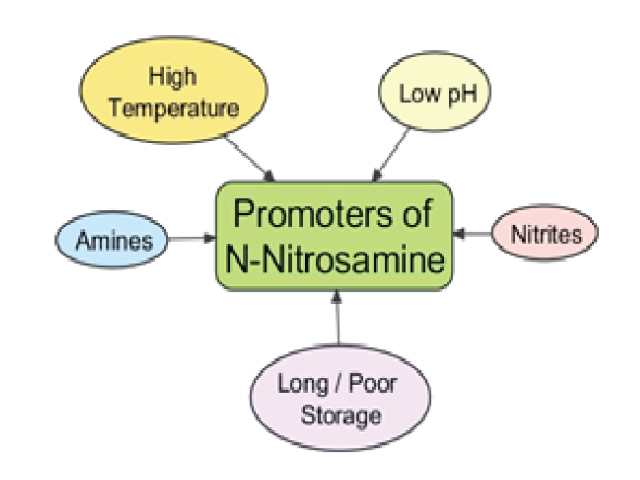Contamination of Food by Nitrosamines and the Associated Public Health Risks
DOI:
https://doi.org/10.5530/bems.9.2.8Keywords:
NilAbstract
The presence of N-Nitrosamines (N-NAs) in food poses a serious risk to public health, according to a recent scientific opinion by the European Food Safety Authority (EFSA).1,2 These genotoxic compounds, which induce liver tumours in rodents, are found in various food categories, with 'meat and meat products' being the main contributor to dietary exposure.1-3 The EFSA assessment revealed that the Margin of Exposure (MOE) for the 10 carcinogenic N-NAs (NDMA, NMEA, NDEA, NDPA, NDBA, NMA, NSAR, NMOR, NPIP, and NPYR) in food was highly likely to be less than 10,000 for all age groups, indicating a significant health concern.1-3 However, the assessment was limited by uncertainties due to censored data and lack of information on some food categories. This highlights the need for continued monitoring of N-NAs in food and the implementation of mitigation measures to protect public health. The CONTAM Panel of the European Commission has conducted a scientific evaluation of the human health risks associated with the presence of N-NAs in food.1-3 N-NAs are formed in food through the reaction of nitrosating agents with amino-based substances under certain routine processing conditions (Figure 1). These compounds have been detected in various food products such as cured meats, processed fish, beverages, cheese, soy sauce, oils, processed vegetables, and human milk.4,5 Heat treatment during food processing can also increase the levels of N-NAs, particularly in meat and fish products.6,7 The CONTAM Panel has identified and characterized the hazards of 32 N-NAs, but the risk assessment was focused on 10 carcinogenic N-NAs found in food.1 These compounds have been shown to be absorbed and distributed in the bodies of experimental animals, primarily to the liver but also to lungs, kidneys, and brain.8,9 N-NAs are also known to cross the placenta, and fetal exposure to these compounds has been reported.10,11. Read more...

Downloads
Published
How to Cite
Issue
Section
License
Copyright (c) 2023 Biology, Engineering, Medicine and Science Reports

This work is licensed under a Creative Commons Attribution-NonCommercial-NoDerivatives 4.0 International License.









